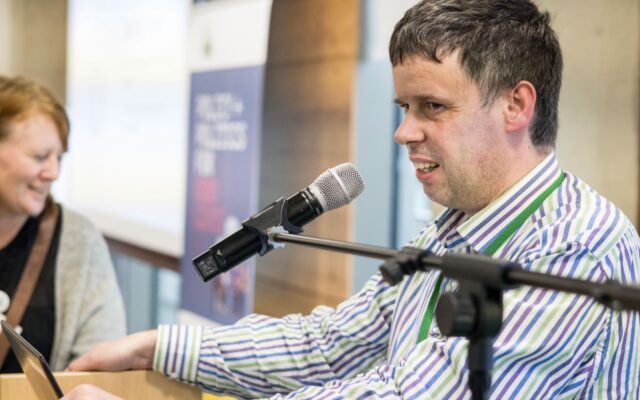Everyone with memories to contribute is welcome at the Social History of Learning Disability Research Group, which I founded in 1994.
But only recently have I noticed the missing element of our work – the importance of sharing that history with the people whose lives are influenced by it.
It has been recognised since the 1960s that so-called marginalised groups – women, gay and lesbian people, people from black and minority ethnic groups – need to reclaim their past. It has taken decades longer to come to the realisation that people with learning disabilities need this too.
This is because of many obstacles: narrow curricula in special schools; mainstream schools unlikely to adapt their lessons for a minority of pupils; many people cannot read well enough to understand books and articles; and little encouragement for people even to own such a stigmatised label.
Yet when people have been helped to see their experiences in the light of recent historical events, it has been like switching on a light.
It all started with Mabel Cooper, a survivor of an institution who, with the help of my longtime colleague Dorothy Atkinson, recorded her life story, piecing together missing aspects from official records.
Cooper made an enormous contribution to bringing this hidden and often shameful history to light, through books, conferences, work in schools and her autobiographical film No Longer Shut Up (which is on YouTube).
What I missed at the time was how important it was to Cooper to know that this was how it was in “them days”. She gained comfort from knowing that she was not alone in being wronged.
Cooper was, indeed, not the only one. Ebba Hreinsdóttir, born in 1950 in Reykjavik, Iceland, was sterilised at the age of 14 at her family’s behest, without her knowledge or consent. At 18, after her mother’s death, she was placed in an institution. Aged 28, she was released. Other women were being sterilised as a condition of release. She asked why she wasn’t – and found out. She was very angry.
When people have been helped to see their experiences in the light of recent historical events, it has been like switching on a light
Slowly, working with her friend Gudrun Stefánsdóttir, who had been employed at the institution, Hreinsdóttir learnt that sterilising women with learning disabilities was legal in Iceland at the time.
It wasn’t right – she knew that – but she also knew her mother was simply doing what she was told. It was not Hreinsdóttir’s fault and nor was it her mother’s.
Sharing landmarks in history can have striking effects. When I explain that until 1970, many people with learning disabilities were excluded from school on the grounds that they were “ineducable”, it is a shock but also a comfort.
Why does it matter that young people with learning disabilities have an opportunity to learn about this recent, often shameful past?
Not many people know about this history, even those without learning disabilities. Finding out about it helps people talk about bullying, discrimination and poor experiences at school. Putting your experience in context can take away a sense of failure, of being the only one to be treated like that.
Also people need to hear the stories of heroes and role models such as Hreinsdóttir and Cooper. Without remembering the past, we are all too likely to repeat mistakes.
As Cooper said: “A lot of people, especially people like me, we always think if they did not have enough money to keep us outside they would say ‘Right you all have to go back into hospital’. It is important that they knock them down.
“It’s important that the books stay because that is a reminder of what happened.”





